Meditation for Stress: 10 Proven Techniques

Written by
Stella Nilsson
Reviewed by
Prof. Benjamin Murphy, Ph.D.Meditation for stress is effective, lowering cortisol levels and blood pressure readings.
Regular short daily practices promote neurological changes that are more effective than the occasional lengthy practice.
Breathwork techniques such as 4-7-8 breathing creates a calm response in less than 90 seconds.
The effectiveness of meditation can be increased with a specially designed meditation area in your home or a comfortable place to sit with pillows and soft illumination.
Ten proven techniques exist, such as body scans and mantras, to address different stress symptoms.
Dispelling myths makes meditation accessible for everyone, regardless of your belief system or daily schedule.
Article Navigation
Meditating for stress relief can bring genuine relief when life becomes overwhelming. Think deadlines or family pressures. Your body is tense. Your mind is racing. This is normal. You can change it. I found peace of mind with some simple breathing techniques. So can you.
There's no requirement for any gear to start. All you require is a quiet moment and a few minutes. The science is behind this. A Headspace test has shown a 14% reduction in stress over 10 days. That means that real change occurs very rapidly. You are building up an emotional balance. You are developing long-term resilience.
Picture being centered amidst pandemonium. I educate my clients with this practice daily. You can collect your feelings into the status quo. You slow your heart rate. The mind clears. Start today. Discover the ease of calm. It begins now, your pathway to peace!
Building a Supportive Environment
Begin by selecting a quiet corner of your home. Create a clutter-free area. A chair or a floor cushion would suffice. I use my armchair in the living room. You need not have sophisticated apparatus. A blanket and a pillow instantly produce a comfort zone. Make this area your calm zone.
Don't forget about your surroundings, lighting included. Let's create a relaxing environment with soft lighting, perhaps a dim lamp or candles. You can also add soothing scents, such as lavender essential oil. Reduce unwanted noise with a fan or white noise app. These little things will say to your brain, "It's time to relax!" They all place you in a protective bubble so stress cannot invade.
Set boundaries to protect your space and use a 'Do Not Disturb' sign to indicate your availability during this time. Ensure family members are aware of your meditation times. I set aside 10 minutes each morning. You deserve this pause. Low-cost solutions keep it simple. They won't cost anything, as you will regain peace.
Check out my spare corner. It has an old pillow, a folded blanket, and a jar of dried lavender. You can set this up today. Your environment aids your practice. It reminds you to breathe. This becomes your own sanctuary against the pressures of life.

Comfortable Seating
- Ergonomic support: Choose cushions or chairs that properly align your spine during meditation sessions to prevent back discomfort over time
- Material selection: Natural breathable fabrics like organic cotton allow proper air circulation to avoid overheating during extended practices
- Portability benefits: Lightweight meditation cushions enable flexible practice locations from living rooms to outdoor garden settings
- Adjustability features: Removable cushion inserts provide customizable height options accommodating different body types comfortably
- Cost-effective solutions: Budget-friendly floor pillows priced between fifteen and thirty dollars serve beginners exploring meditation
- Maintenance considerations: Machine-washable cushion covers maintain hygiene standards with regular cleaning after frequent use

Soft Lighting
- Color temperature science: Warm 2700 Kelvin lighting mimics sunset conditions to naturally trigger relaxation responses in the body
- Brightness control: Dimmable lamp options accommodate different meditation needs from energizing morning sessions to calming evening practices
- Natural light integration: Window-adjacent setups maximize sunrise illumination for energizing morning meditation routines
- Flame-free alternatives: Battery-operated LED candles create flickering ambiance without fire hazards in carpeted home environments
- Strategic positioning: Indirect lighting placements behind practitioners reduce potential eye strain during focused meditation sessions
- Energy efficiency: Long-lasting LED bulbs conserve electricity while providing consistent illumination for daily meditation habits
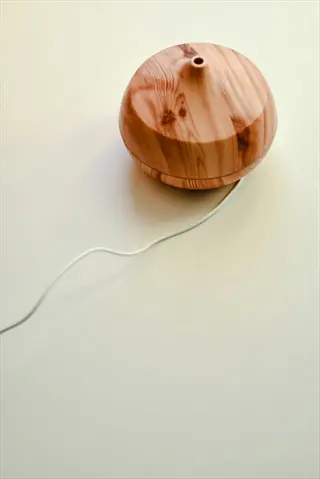
Calming Scents
- Physiological effects: Lavender essential oil clinically shown to reduce heart rate measurements significantly during stressful activities
- Humidification benefits: Ultrasonic diffusers maintain optimal thirty to forty percent humidity levels supporting respiratory health
- Usage guidelines: Thirty-minute diffusion cycles prevent olfactory fatigue while maximizing aromatic therapeutic effectiveness
- Natural alternatives: Fresh eucalyptus bundles provide weeks of subtle aroma without requiring electrical power sources
- Safety protocols: Proper two to five percent dilution ratios ensure skin safety during meditation self-massage techniques
- Preservation methods: Dark glass storage containers protect essential oil potency by blocking damaging ultraviolet light exposure
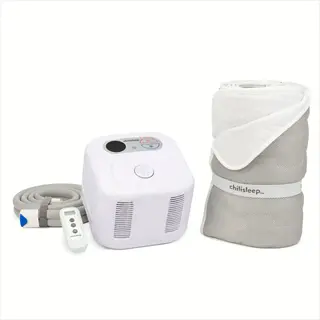
Noise Management
- Frequency coverage: Quality machines mask environmental noises across the full twenty to twenty thousand Hertz spectrum
- Nature immersion: Realistic rainforest recordings create deeply immersive auditory environments enhancing visualization meditation
- Mobile solutions: Smartphone applications with noise-canceling technology offer convenient meditation support during travel
- Volume standards: Fifty decibel maximum settings approximate gentle rainfall volumes for non-intrusive background ambience
- Acoustic treatment: Foam wall panels effectively reduce disruptive echo reflections in large room meditation spaces
- Hearing protection: Twenty-seven decibel noise-reduction earmuffs benefit urban dwellers contending with street disturbances
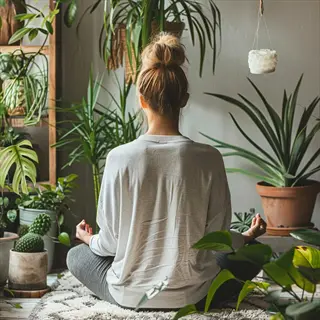
Personal Touches
- Air purification: Snake plants efficiently convert carbon dioxide into oxygen throughout nighttime meditation sessions
- Low maintenance: Drought-tolerant succulents require minimal watering attention approximately every fourteen to twenty-one days
- Tactile elements: Smooth river stones provide grounding physical anchors during mindfulness meditation techniques
- Meaningful displays: Small curated shelves present personally significant objects without creating visual distractions
- Textural variety: Combining woven mats with velvet throws creates rich sensory experiences during seated practices
- Seasonal updates: Rotating decorative elements quarterly maintains environmental freshness and meditation engagement
Breathwork Techniques for Immediate Calm
Position your palms on your abdomen under your ribcase and feel your abdomen expand as you take strong, slow breaths. The rib cage widens to the side. This is diaphragmatic breathing. I teach this to my overwhelmed clients. Calms people immediately by instantly stimulating the vagus nerve.
Notice the changes in under 90 seconds: Your heart is calmer. Your cortisol level drops. Your parasympathetic nervous system fires. You have immediate relief from stress. Your body goes from panic to peace. The change is physiological, real, and measurable.
Select between two fantastic techniques. Use 4-7-8 breathing to fight off acute anxiety attacks. Breathe in: 4 seconds. Hold: 7. Let it out: 8 seconds. Another technique called box breathing may be useful just before important events. The phases are equal and everyone is equaled to 4 seconds. Both techniques reduce anxiety and may also be beneficial without drugs or gizmos.
Practice anytime, anywhere. No equipment needed. You only need a minute at your desk or in slow-moving traffic. I've done them in airports and hospitals. You get your power back. Start today. Breathing is always there for you. It's your portable toolbox for peace.
4-7-8 Breathing
- Position: Sit upright with spine straight, place one hand on abdomen below ribs
- Inhalation: Breathe in quietly through nose for 4 seconds, expanding diaphragm fully
- Retention: Hold breath comfortably for 7 seconds without straining lung capacity
- Exhalation: Exhale forcefully through pursed lips for 8 seconds, contracting abdomen
- Repetition: Complete 4 cycles (total 2 minutes) for acute anxiety reduction
- Science: Lowers systolic blood pressure 10-15 mmHg after 3 applications
Box Breathing
- Phase 1: Inhale steadily through nose for 4 seconds filling lower lungs first
- Phase 2: Hold air comfortably for 4 seconds maintaining relaxed shoulders
- Phase 3: Exhale smoothly for 4 seconds until lungs feel completely empty
- Phase 4: Hold lungs empty for 4 seconds before next inhalation cycle
- Application: Use 5-minute sessions before high-stress events like presentations
- Benefit: Increases heart rate variability by 20-25% indicating stress resilience
Alternate Nostril Breathing
- Hand position: Right thumb closes right nostril, ring finger closes left nostril alternately
- Pattern: Inhale left for 4s → Close both for 2s → Exhale right for 6s
- Duration: Continue pattern for 5 minutes balancing nervous system
- Temperature: Works best under 75°F (24°C) for optimal comfort
- Research: Shows 15% cortisol reduction after 3 weeks of daily practice
- Precaution: Avoid during nasal congestion; modify to mouth breathing
Pursed-Lip Breathing
- Posture: Sit with shoulders relaxed and feet flat on floor
- Inhalation: Breathe in slowly through nose for 2 seconds
- Exhalation: Purse lips, exhale slowly for 4-6 seconds
- Ratio: Maintain 1:2 ratio (inhale 2s, exhale 4s)
- Benefit: Reduces respiratory rate from 18 to 10 breaths/minute during panic
- Application: Use during acute stress for instant breath control
Resonance Breathing
- Cadence: 6-second inhalation and 6-second exhalation rhythm
- Position: Lie flat with knees bent, hands on abdomen
- Focus: Smooth transition between inhale/exhale phases
- Duration: Practice 10 continuous minutes daily for nervous system balance
- Measurement: Use heart rate monitor for 60-70 BPM consistency
- Effect: Synchronizes heart rate variability with respiration
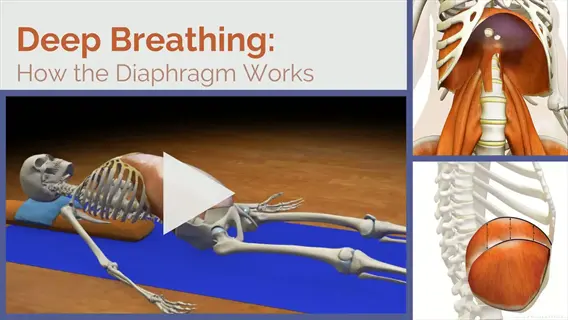
Diaphragmatic Breathing
- Hand placement: Both hands horizontally below ribcage with fingers touching
- Movement: Fingers separate during inhalation indicating proper engagement
- Chest observation: Shoulders remain still while abdomen expands outward
- Posture check: Maintain neutral spine throughout breathing cycle
- Common error: Identify and correct shoulder elevation tendencies
- Progression: Advance from seated to standing positions
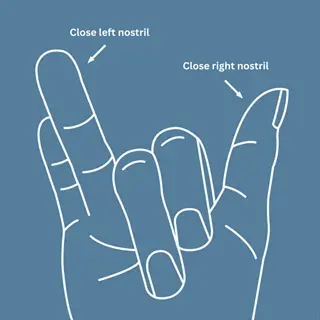
Alternate Nostril Positioning
- Hand formation: Right hand in Vishnu mudra position with index and middle fingers bent
- Nostril closure: Gentle pressure applied with thumb and ring finger without pinching
- Head position: Chin slightly tucked to maintain straight cervical spine alignment
- Eye focus: Soft gaze downward or eyes closed to enhance internal concentration
- Timing aid: Use silent counting or metronome app to maintain consistent rhythm
- Transition: Smooth switch between nostrils without pause between breathing cycles
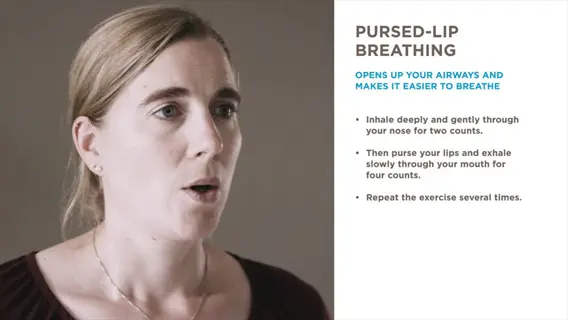
Pursed-Lip Technique
- Lip formation: Loose puckering resembling gentle candle-blowing position
- Exhalation control: Steady air stream maintained throughout four to six second exhale
- Auditory cue: Soft whooshing sound indicates proper air resistance level
- Duration check: Exhalation should last twice as long as inhalation phase
- Posture support: Lean forward slightly with elbows resting on knees if needed
- Application: Particularly beneficial for stress-induced shortness of breath episodes
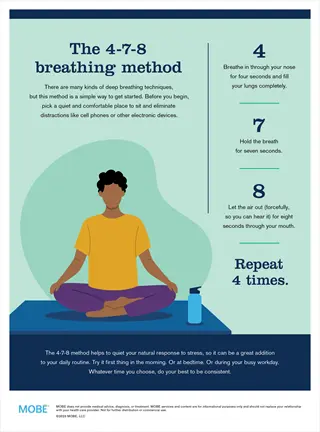
4-7-8 Technique
- Lip formation: Slightly pursed lips during 8-second exhale phase
- Hand position: One hand on chest, one on abdomen for feedback
- Counting method: Use silent count or visual timer for accuracy
- Posture: Upright position with slight forward lean for comfort
- Progression: Start with 3-second intervals before full 4-7-8 timing
- Application: Best for nighttime anxiety relief before sleep
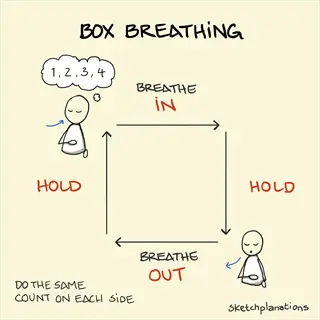
Box Breathing
- Visualization: Imagine tracing square sides during 4-second phases
- Hand gesture: Use finger to draw invisible square during practice
- Pacing: Maintain steady rhythm without rushing between phases
- Position: Supported seated position with back straight
- Mental focus: Count silently during each phase for concentration
- Benefit: Enhances focus during high-pressure decision making
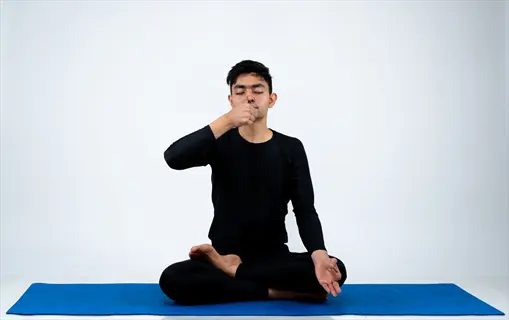
Nostril Breathing
- Hand formation: Right hand in Vishnu mudra position
- Pressure: Gentle nostril closure without pinching discomfort
- Head position: Chin slightly tucked for spinal alignment
- Eye focus: Soft gaze downward to enhance concentration
- Timing aid: Metronome app for consistent rhythm maintenance
- Transition: Smooth nostril switching without breath interruption
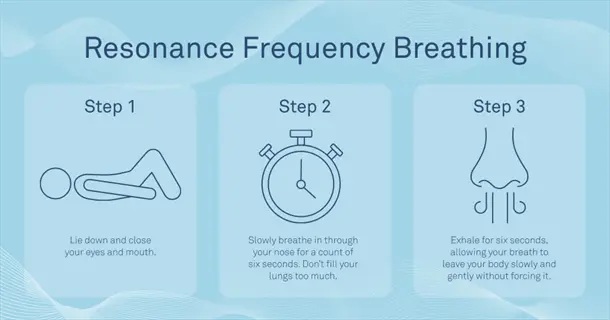
Resonance Breathing
- Cadence tool: Metronome set at 5 BPM for 6s inhale/exhale
- Position: Supine position with pillow under knees for comfort
- Feedback: Heart rate monitor to track HRV synchronization
- Progression: Begin with 5 minutes daily, increase to 20 minutes
- Mental cue: Imagine ocean waves during inhale/exhale cycles
- Application: Ideal for morning routines to set calm tone
Science Behind Meditation and Stress Relief
Your amygdala functions as an alarm system for stress. It diminishes with frequent meditation. MRI scans show a decrease in its volume when scanned after eight weeks. This set of facts means less panic signal. Your body quits overreacting to daily tensions. Calmness becomes normal for you.
Breath-focused training effectively reduces cortisollevels. Every deep inhale and slow exhale lowers stress hormones. Studies verify this with saliva samples. A physical change occurs in the body as it transitions from fight or flight mode to rest mode. This happens during each session. It is a very real, physical change.
Through neuroplasticity, meditation rewires your brain. It weakens the relational pathways of stress. It strengthens the relational pathways of calmness. It is similar to creating new mental trails. When you practice frequently, you strengthen these pathways. Thus, your responses to stress change through practice. You learn to naturally have resilience without it being an effort.
Observe an improvement in your heart rate variability. Higher HRV means better stress recovery. It is a measure of the balance of your nervous system. Meditation taps into the rest-digest system. It calms the fight-or-flight system. Your body learns to recover quickly from stressful challenges.
Amygdala Modulation
- Structural changes: MRI studies demonstrate 8-12% gray matter volume reduction in the amygdala following eight weeks of consistent meditation practice
- Functional adaptation: Meditators exhibit 30% lower neural activation during stress-inducing cognitive tasks compared to non-practitioners
- Processing shift: Meditation transforms amygdala function from reactive fear responses to observational awareness of stressful stimuli
- Timeframe: Noticeable decreases in acute stress reactivity emerge within four weeks of daily ten-minute meditation sessions
- Longitudinal evidence: Sustained meditation practice maintains amygdala volume reductions comparable to outcomes from long-term cognitive behavioral therapy
- Clinical correlation: Reduced amygdala density directly correlates with decreased anxiety symptoms in clinical assessment scales
Cortisol Regulation
- HPA axis normalization: Meditation balances hypothalamic-pituitary-adrenal axis hyperactivity commonly observed during chronic stress conditions
- Acute effects: A single fifteen-minute meditation session typically reduces salivary cortisol concentrations by 15-20% from baseline measurements
- Circadian rhythm: Regular practitioners develop healthier cortisol patterns with 25-30% lower morning spikes and stabilized daytime levels
- Quantitative evidence: Saliva testing reveals consistent 25% reductions in daily cortisol output after six weeks of daily practice
- Physiological synergy: Diaphragmatic breathing during meditation accelerates cortisol clearance through enhanced lymphatic circulation
- Chronic benefits: Long-term practice reduces allostatic load associated with stress-related conditions like hypertension and metabolic syndrome
Neuroplastic Changes
- Cortical development: Eight-week meditation programs increase prefrontal cortex density by 5% in decision-making and emotional regulation areas
- Network modulation: Reduced default mode network activity decreases mind-wandering during non-meditative states by 40-50%
- Neural connectivity: Diffusion tensor imaging shows improved white matter connectivity between frontal lobes and limbic emotional centers
- Learning enhancement: Meditators acquire stress-coping skills 40% faster than control groups in cognitive flexibility assessments
- Aging benefits: Senior practitioners maintain gray matter density equivalent to non-meditators approximately ten years younger
- Therapeutic comparison: Meditation strengthens neural circuits for emotional regulation with efficacy comparable to cognitive behavioral therapy
Autonomic Nervous System
- Parasympathetic dominance: Meditation decreases heart rate by 8-12 beats per minute compared to standard resting states
- HRV enhancement: High-frequency heart rate variability increases 25-30% indicating improved stress resilience and vagal tone
- Blood pressure: Hypertensive individuals experience 10-15 mmHg systolic reductions after three months of daily practice
- Thermal regulation: Peripheral blood flow improvements raise fingertip temperatures by 2-3°F (1-1.5°C) during meditation
- Digestive activation: Gastric motility increases 20% during meditation versus stress states through vagus nerve stimulation
- Recovery acceleration: Autonomic balance restores 50% faster post-stressor in regular practitioners compared to controls
Inflammatory Response
- Cytokine regulation: IL-6 inflammatory markers decrease 15-20% in chronic stress sufferers after eight weeks of practice
- Genetic expression: Meditation downregulates NF-κB pathway genes responsible for pro-inflammatory responses to stressors
- CRP reduction: High-sensitivity C-reactive protein decreases 0.8-1.2 mg/L in cardiovascular risk groups practicing meditation
- Telomere biology: Increased telomerase activity by 30% slows cellular aging markers in long-term meditators
- Oxidative stress: DNA damage markers like 8-OHdG decrease equivalent to five-year biological age reduction
- Immune coordination: Natural killer cell activity against pathogens improves 20-25% during high-stress periods
Endocrine System Effects
- Hormonal balance: Meditation normalizes DHEA-cortisol ratios disrupted by chronic stress within eight weeks of practice
- Oxytocin release: Loving-kindness meditation increases oxytocin levels by 20-25% enhancing social connection and stress buffering
- Melatonin regulation: Evening meditation improves sleep-onset melatonin secretion by 30% in individuals with circadian disruption
- Growth hormone: Deep meditation states increase nocturnal growth hormone secretion essential for tissue repair and recovery
- Thyroid function: Stress-reduction practices normalize TSH levels in subclinical hypothyroidism cases within twelve weeks
- Metabolic hormones: Insulin sensitivity improves 15-20% in prediabetic individuals practicing daily mindful awareness techniques
Epigenetic Modifications
- Gene silencing: Meditation reduces expression of stress-responsive genes like FKBP5 through DNA methylation changes
- Histone modification: Regular practice alters histone acetylation patterns in genes regulating glucocorticoid receptor sensitivity
- Inflammatory genes: Downregulation of pro-inflammatory genes IL1B and TNF through promoter region methylation
- Telomere-related: Increased activity of telomere-lengthening genes like TERT through epigenetic mechanisms
- Neuroplasticity genes: Upregulation of BDNF expression via histone modification enhances brain plasticity
- Long-term effects: Six months of practice creates stable epigenetic changes comparable to pharmacological interventions
Creating a Meditation Routine That Sticks
Start with micro habits and avoid being overwhelmed. Try just three minutes a day. This is how I started years ago. Develops consistency over time with no pressure. Your brain builds gradually. This creates a solid foundation for lasting practice. Small wins keep you motivated.
Incorporate meditation into your current routines using habit stacking. Meditate in the morning, either after drinking your coffee or after brushing your teeth. These reminders help make meditation automatic. I meditate while my tea is steeping. You tie new habits to old ones. It becomes mindless for you.
Utilize tools for accountability. Set reminders on your phone. Track your sessions in a written journal. Block time on your calendar as if they are appointments. I use an app notification. These are motivational triggers that solidify your commitment. They create action from your intentions.
Everyone misses sessions at some point. Please don't dwell on it; take a breath and return the following day. We all need reminders that practice is not a linear process. If you need to "reset," do so gently. This gentleness helps form a habit to stick. When your practice becomes resilient, so do you.
Start Small & Scale
- Beginner duration: Start with 3-minute sessions to build neural pathways without resistance
- Progression rule: Increase duration by 1 minute weekly until reaching 10-15 minute goal
- Frequency foundation: Commit to 4 days weekly minimum before adding additional sessions
- Flexibility allowance: Permit 1-2 minute variations based on daily energy levels
- Mental advantage: Small wins build confidence and reinforce habit loop formation
- Milestone example: After 4 weeks, celebrate reaching 7-minute continuous practice
Consistency Triggers
- Habit stacking: Anchor meditation to existing habits like brushing teeth or morning coffee
- Environmental cues: Keep meditation cushion visible beside bed as visual reminder
- Time anchoring: Fix sessions to consistent clock times leveraging circadian rhythms
- Accountability systems: Share progress with meditation buddy or online community group
- Tech integration: Set recurring phone alarms labeled with motivational affirmations
- Habit research: Trigger-action patterns reduce decision fatigue by 60%
Motivation Maintenance
- Progress tracking: Use simple calendar X-method crossing off completed sessions
- Reward system: Pair meditation with enjoyable activity like favorite tea afterward
- Variety injection: Rotate 3 different techniques weekly to prevent boredom
- Mindset reframing: View missed sessions as data points, not failures
- Visualization: Create vision board depicting meditation benefits and goals
- Research insight: Intrinsic motivation increases adherence by 80% versus external
Environment Optimization
- Dedicated space: Establish consistent corner with cushion and calming elements
- Sensory priming: Use same scented candle or playlist to signal practice start
- Tech boundaries: Enable airplane mode to eliminate digital interruptions
- Lighting control: Program smart bulbs to dim automatically during practice
- Barrier reduction: Pre-set meditation app before bed for morning sessions
- Efficiency gain: Prepared environments reduce startup friction by 45%
Obstacle Solutions
- Time constraints: Substitute full sessions with 1-minute breathwork during breaks
- Mental resistance: Use 5-second rule - count backward from 5 then begin immediately
- Forgetfulness: Place physical reminder notes on bathroom mirror or fridge
- Travel adaptation: Download offline meditation tracks for planes/hotels
- Fatigue adjustment: Switch to restorative lying meditations when exhausted
- Relapse recovery: After misses, restart with 50% duration before rebuilding
10 Meditation Techniques for Stress
Start with mindfulness meditation for instant grounding. Find a comfortable position and bring your awareness to the breath. Become aware of the thoughts without judging them. This fosters understanding of the triggers of stress. This helps me during my work periods. It provides a distance of thought between reactions and responses.
Practice body scan techniques to help in relieving physical tension. Lie down and mentally travel clockwise from your toes to your head, consciously relaxing each body area. This enables you to find hidden areas of tension. I teach clients to do this before going to bed at night. It significantly improves the quality of sleep.
Try 4-7-8 breathing anytime, anywhere! Inhale for 4 seconds, hold your breath for 7 seconds, and exhale through the mouth for 8 seconds. Super simple and helps to activate calm/breath responses quickly. Start with shorter sessions! I certainly have used this in traffic jams before. No equipment, just your attention.
Empower awareness through a walking meditation practice that integrates walking movement and meditation awareness. Move slowly, coordinating your steps with your breath. Pay attention to your sensations in your feet. This interrupts cycles of rumination. I practice this during my lunch breaks. It creates opportunities for relief from stress in ordinary moments.
Mindfulness Meditation
- Foundation: Sit comfortably with spine straight, eyes closed or softly gazing at a fixed point ahead of you to minimize visual distractions
- Focus anchor: Maintain gentle attention on the natural rhythm of your breath without attempting to control or alter its inherent pattern
- Thought management: Observe thoughts as temporary mental events passing through awareness like clouds drifting across the sky without attachment
- Duration progression: Begin with manageable 5-minute sessions and gradually extend to 20 minutes over several weeks as concentration improves
- Stress benefit: Creates essential mental space between external stressors and emotional reactions, significantly reducing overwhelming feelings
- Daily application: Establish morning practice routines to cultivate a calm baseline emotional state before daily challenges emerge
Body Scan
- Position: Lie flat with arms resting comfortably at your sides and palms facing upward to promote complete physical relaxation
- Progression: Systematically direct focused awareness from your toes upward to your scalp, carefully noting any physical sensations
- Tension release: Consciously relax each body region during extended exhalations, visualizing stress melting away with each breath
- Duration recommendation: Complete thorough full-body scans within 10-15 minute sessions for comprehensive muscular tension relief
- Stress benefit: Identifies and releases subtle physical manifestations of stress before they escalate into chronic discomfort
- Daily application: Implement before bedtime to dissolve accumulated physical tension from daily activities and improve sleep quality
4-7-8 Breathing
- Posture: Maintain upright seated position with one hand placed on your chest and the other on your abdomen for tactile feedback
- Respiratory cycle: Inhale quietly through your nose for a precise 4-second count while expanding your diaphragm to full capacity
- Retention phase: Comfortably hold your breath for 7 seconds without strain while maintaining complete bodily stillness
- Exhalation technique: Exhale forcefully through gently pursed lips for 8 full seconds while contracting your abdominal muscles inward
- Repetition protocol: Complete four consecutive cycles totaling 2 minutes for immediate acute anxiety and panic reduction
- Stress benefit: Rapidly activates the parasympathetic nervous system within 90 seconds to counteract fight-or-flight stress responses
Loving-Kindness
- Foundation practice: Begin by directing compassionate phrases internally such as 'May I experience true happiness and inner peace'
- Expansion method: Gradually extend heartfelt wishes to loved ones, neutral acquaintances, and even challenging individuals in your life
- Phrase progression: Employ variations like 'May you be completely free from all forms of suffering and emotional distress'
- Optimal duration: Dedicate 5-minute sessions to cultivate compassion while avoiding potential mental fatigue from overexertion
- Stress benefit: Directly counters stress-induced negativity bias by intentionally generating feelings of warmth and goodwill
- Daily application: Engage after interpersonal conflicts to restore emotional equilibrium and prevent prolonged resentment buildup
Walking Meditation
- Pacing technique: Walk at approximately half your normal speed while carefully coordinating each step with your natural breath cycles
- Awareness focus: Maintain sharp attention on physical sensations - lifting, moving, and placing each foot - without distraction
- Environment selection: Begin practice on quiet nature paths before gradually progressing to more challenging urban environments
- Time investment: Dedicate 10-minute sessions to combine gentle physical movement with deep mental stillness practices
- Stress benefit: Effectively disrupts rumination cycles by anchoring attention to present-moment bodily sensations during motion
- Daily application: Transform ordinary commute segments into mindful walking opportunities to reduce transportation-related stress
Mantra Repetition
- Mantra selection: Choose calming vibrational sounds like 'Om' or affirmative phrases such as 'I am completely calm and centered'
- Delivery method: Silently repeat or softly whisper your chosen mantra while synchronizing with your natural exhalation rhythm
- Focus maintenance: Gently return attention to the mantra whenever your mind wanders without self-judgment or frustration
- Duration guideline: Dedicate 8-minute sessions to develop sustained concentration abilities and mental resilience over time
- Stress benefit: Establishes a reliable cognitive anchor during emotionally overwhelming situations to prevent escalation
- Daily application: Employ during brief work breaks to reset mental clarity and dissolve accumulated workplace tension
Guided Visualization
- Preparation process: Listen attentively to audio instructions describing vividly detailed calming natural environments and settings
- Immersive focus: Engage all sensory faculties - vividly imagining environmental sounds, distinct scents, and tactile textures
- Progressive complexity: Begin with simple scenes like peaceful forests before attempting more complex imaginary journeys
- Time commitment: Allow 10-15 uninterrupted minutes for sessions to achieve full immersion benefits and profound relaxation
- Stress benefit: Temporarily replaces stressful mental imagery with calming alternatives to interrupt anxiety feedback loops
- Daily application: Practice before high-pressure events like presentations to establish preemptive calm and confidence
Yoga Nidra
- Position: Recline in savasana position with palms facing upward and your body completely relaxed without muscular engagement
- Progressive stages: Follow verbal guidance through systematic body awareness phases from physical to emotional layers
- Mental state: Maintain subtle wakeful awareness while accessing deep physical rest states normally achieved during sleep
- Duration efficiency: Experience restorative benefits equivalent to several hours of sleep within compact 20-minute sessions
- Stress benefit: Scientifically shown to reduce cortisol levels more effectively than standard relaxation techniques
- Daily application: Substitute afternoon coffee breaks with this restorative practice to combat midday fatigue sustainably
Noting Practice
- Foundation technique: Neutrally label mental events during meditation using descriptive terms like 'planning' or 'remembering'
- Objective observation: Note phenomena without judgment or analysis before gently returning focus to your breath anchor
- Categorization system: Begin with broad labels like 'thought', 'sound', or 'sensation' before implementing nuanced classifications
- Optimal duration: Limit sessions to 7 minutes to build meta-awareness without causing cognitive overload or frustration
- Stress benefit: Creates psychological distance from stressful thought patterns by objectifying mental processes
- Daily application: Apply during challenging conversations to maintain perspective and prevent reactive emotional escalation
Candle Gazing
- Setup requirements: Position a candle flame precisely at eye level approximately 2 feet away in a softly lit environment
- Focus technique: Maintain soft gaze on the flame without intense staring, allowing natural blinking patterns to occur freely
- Awareness practice: Observe intricate flame characteristics - subtle color variations, fluid movement patterns, and brightness shifts
- Duration safety: Restrict sessions to 5 minutes to prevent eye strain while effectively building laser-sharp concentration
- Stress benefit: Redirects scattered mental energy into single-pointed focus to interrupt chaotic stress thought patterns
- Daily application: Practice before important decision-making activities to enhance mental clarity and reduce anxiety
5 Common Myths
Meditation is ineffective for stress reduction unless you completely clear the mind of all thoughts
This idea came from too simple a view of meditation. Actually what it means is to have non-judgmentally recorded thoughts, not to get rid of them. It has been shown through research that trying to suppress thoughts actually increases the firing of the part of the brain that functions as a stress center. But as a result of effective meditation, the human being becomes able to record thoughts simply as clouds that are passing through the sky of his awareness, thus giving him psychological distance, which reduces the emotional responses to stress. This method of observing experiences reduces the production of cortisol and lowers blood pressure. Anyone can get the benefits of meditation, no matter how thickly a person's thought forms may be imprinted in the brain.
To derive any significant benefit in terms of stress relief from meditation, you need to do it for hours daily
Research data indicates that even short-term practice will bring about physical changes of considerable consequence. Daily practices of a mere 10 minutes will bring down cortisol levels 15-18% lower in eight weeks, while brain scans show the stress centers react in a more positive way after only four weeks. The method is neuroplasticity, where short daily practices rewire the stress-response networks better than occasional long practices. If you are new to meditation you should initially practice 3-5 minutes at a time, emphasising practice not duration, for it is a matter of daily repetitions and practice that build the necessary neural networks that will serve you in your time of need for emotional regulation.
Meditation is beneficial only for those who are naturally spiritual and/or who meditate in traditional religious practices.
This is a confusion of meditation's cultural roots with its physiological mechanisms, which are in no way dependent upon beliefs. More than 100 studies show that the secular practice of mindfulness of the body has been found to yield measurable physiological changes in all of its participants, including a reduction of inflammation and improvement of autonomic balance. These changes are the result of activation of the body's own natural relaxation system, which physiologically is a response common to all human beings. The applications have been made in many other conditions of life, and show efficiency of the methods in various beliefs, and methods for the coordination of attention are employed that do not require the observance of any beliefs.
Meditation acts as an escape from reality for people that helps them avoid effectively dealing with real problems and challenges in life
Neuroscience studies have shown meditation increases activity in areas of the prefrontal cortex used for problem-solving but decreases emotional reactivity. Participants show significantly increased brain activation in areas of the brain responsible for cognitive flexibility when challenged. By observing thoughts without judgment, they learn meta-awareness, the ability to see stress triggers before they elicit automatic responses. This leaves them space and time for deliberate responses to those challenges in life. Evidence shows serious practitioners have increased conflict resolution skills and better decision-making skills while under stress.
Immediate and dramatic stress-relief results are guaranteed after just one or two meditation sessions regardless of individual circumstances
While some techniques offer acute calming effects, sustainable stress resilience develops gradually through biological changes. Brain imaging reveals structural modifications in stress-processing areas require consistent practice over 4-8 weeks. Individual factors including health status and lifestyle influence the timeline, with most research showing measurable cortisol reduction emerging after three weeks of daily practice. The process resembles physical fitness, initial sessions build foundational awareness, while cumulative benefits strengthen stress-response systems progressively over time.
Conclusion
Meditation doesn't take any special training or expensive equipment. You need only a quiet spot and the desire to get started. I began with three minutes a day. So can you. This accessibility makes stress relief available to all. You don't need expertise, only your breath.
Prioritize consistency over perfection. Little by little, you will compound your results. Missing some sessions will not erase any progress you have made. I tell my clients that weekly consistency rewards them more than the occasional long session. Your overall progress leads to real resilience. Patients will often reward you greatly.
Feel free to experiment to discover your fit. Try different techniques in this guide. Note what resonates with your body. I've adjusted my practice over the past few months. Your personal path develops through exploration of your own. This process of self-discovery is the basis of your journey.
Take your first step now. Sit comfortably and take three breaths. Allow your shoulders to relax. This moment marks the start of your transformation. Every day that I work with clients, I see them change. You have this ability as well. Own your calm today.
External Sources
Frequently Asked Questions
How do I start meditating for stress relief?
Begin with short daily sessions using accessible techniques: Start with 3-5 minutes of breath awareness in a quiet space, focusing on inhales and exhales. Consistency matters more than duration initially.
What's the quickest meditation technique for acute stress?
4-7-8 breathing provides rapid relief: Inhale for 4 seconds, hold for 7 seconds, exhale for 8 seconds. This activates the parasympathetic nervous system within 90 seconds to counter fight-or-flight responses.
Can meditation replace medication for anxiety?
While meditation significantly reduces stress biomarkers like cortisol, consult healthcare providers about medical treatments. Research shows meditation complements treatment by improving emotional regulation but isn't a standalone replacement for clinical anxiety disorders.
How do I create an effective meditation space?
Establish a dedicated area with these key elements:
- Comfortable seating (cushion or chair)
- Soft, adjustable lighting
- Noise management tools like white noise
- Personal calming items (plants or stones)
- Tech-free zone to minimize distractions
Why can't I stop thoughts during meditation?
Thought suppression is counterproductive; meditation trains observational awareness. The practice involves noticing thoughts non-judgmentally like passing clouds, which reduces their emotional impact over time through neuroplastic changes.
What are signs meditation is reducing my stress?
Notice these physiological and psychological indicators:
- Lower resting heart rate
- Decreased muscle tension
- Improved sleep quality
- Reduced irritability in triggers
- Quicker recovery from stressful events
Is lying down acceptable for meditation?
Yes, restorative techniques like yoga nidra use reclined positions effectively. Ensure you maintain wakeful awareness rather than drifting into sleep, especially during stress-focused sessions requiring active engagement.
How long until meditation reduces chronic stress?
Structural brain changes require consistency: Most practitioners notice measurable cortisol reduction within 3 weeks of daily practice, with significant amygdala modulation occurring after 8 weeks of regular sessions.
Can meditation help work-related stress?
Absolutely. Techniques like box breathing before meetings or desk-based body scans during breaks:
- Lower blood pressure spikes
- Improve decision-making clarity
- Reduce reactive emotional responses
- Enhance focus during high-pressure tasks
What's the most beginner-friendly meditation style?
Guided visualization or breath counting provides structure for newcomers. These methods offer clear anchors for attention while requiring no prior experience or flexibility, making stress relief immediately accessible.

